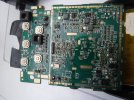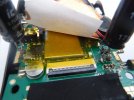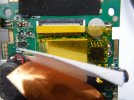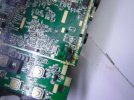Vincy Gav
New Member
Hi guys,
I bought an Viofo A119 (version 1) in 2016 it was a very good dash cam but now think it has done its day. Did updated the software on it twice, the later one had included a park mode that was never there when new so was handy instead of using motion detection as a surveillance when parked up.
Last year it seemed to be playing up. I have had it hard wired to the car since new. Firstly every-time I switched the engine on, it would corrupt the last recorded file before the engine was switched on then also the dashcam would cut off. I would have to press the power button to turn it back on. That was not too bad and liveable. I even thought it was the SD card and changed for 2 different ones and same thing.
This year it has been getting worse that some of the files in park mode which end with P and some of the normal filming drive modes do not work and get corrupted. This is in mp4 video mode as it has always been. The message 'Windows Media Player cannot play the file. The Player might not support the file type or might not support the codec that was used to compress the file.' happens on certain files when opening from the computer.
I noticed the top of one of the capacitors was slightly bulged and thought it came to the time to replace them. I did this 2 days ago and realise that it hasn't seemed to make a difference. They are brand new capacitors of the exact same value, so a bit confused as to why this is still happening.
Anyone know any other tips or I think it would be just going in the bin. It is pointless in having it if it is now corrupting video files when driving as that is when it is needed most.
I bought an Viofo A119 (version 1) in 2016 it was a very good dash cam but now think it has done its day. Did updated the software on it twice, the later one had included a park mode that was never there when new so was handy instead of using motion detection as a surveillance when parked up.
Last year it seemed to be playing up. I have had it hard wired to the car since new. Firstly every-time I switched the engine on, it would corrupt the last recorded file before the engine was switched on then also the dashcam would cut off. I would have to press the power button to turn it back on. That was not too bad and liveable. I even thought it was the SD card and changed for 2 different ones and same thing.
This year it has been getting worse that some of the files in park mode which end with P and some of the normal filming drive modes do not work and get corrupted. This is in mp4 video mode as it has always been. The message 'Windows Media Player cannot play the file. The Player might not support the file type or might not support the codec that was used to compress the file.' happens on certain files when opening from the computer.
I noticed the top of one of the capacitors was slightly bulged and thought it came to the time to replace them. I did this 2 days ago and realise that it hasn't seemed to make a difference. They are brand new capacitors of the exact same value, so a bit confused as to why this is still happening.
Anyone know any other tips or I think it would be just going in the bin. It is pointless in having it if it is now corrupting video files when driving as that is when it is needed most.







